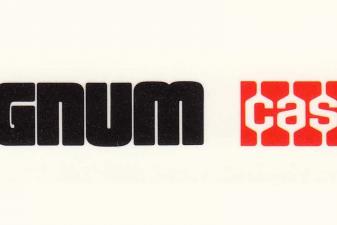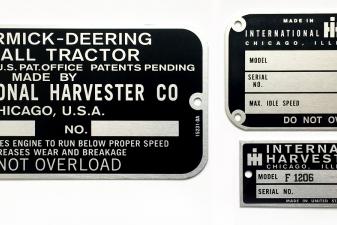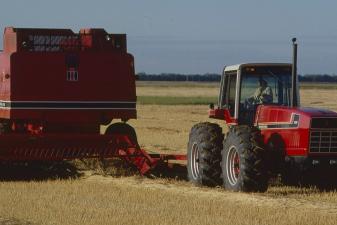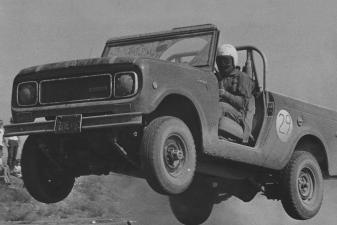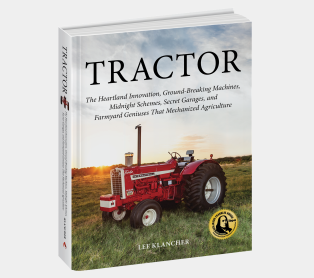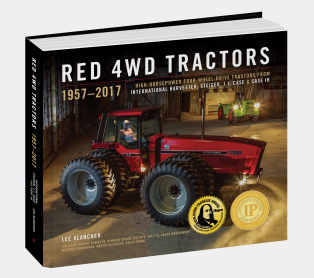Cub Cadet

Harvester’s first garden tractor (released January 1961) was simply called the Cub Cadet. It was the product of a rapid development program that went from concept to production in little over a year.
“The product had been a greater success than anyone had dreamed of,” Harold Schramm, the driveline engineer on the project said when describing International Harvester’s entry into the lawn and garden tractor market. The Cub Cadet went through some minor changes during its production life, but it utilized a 7-horsepower Kohler engine, a V-belt to couple the engine to the clutch-drive shaft, and a U-spring-mounted pan seat throughout that time.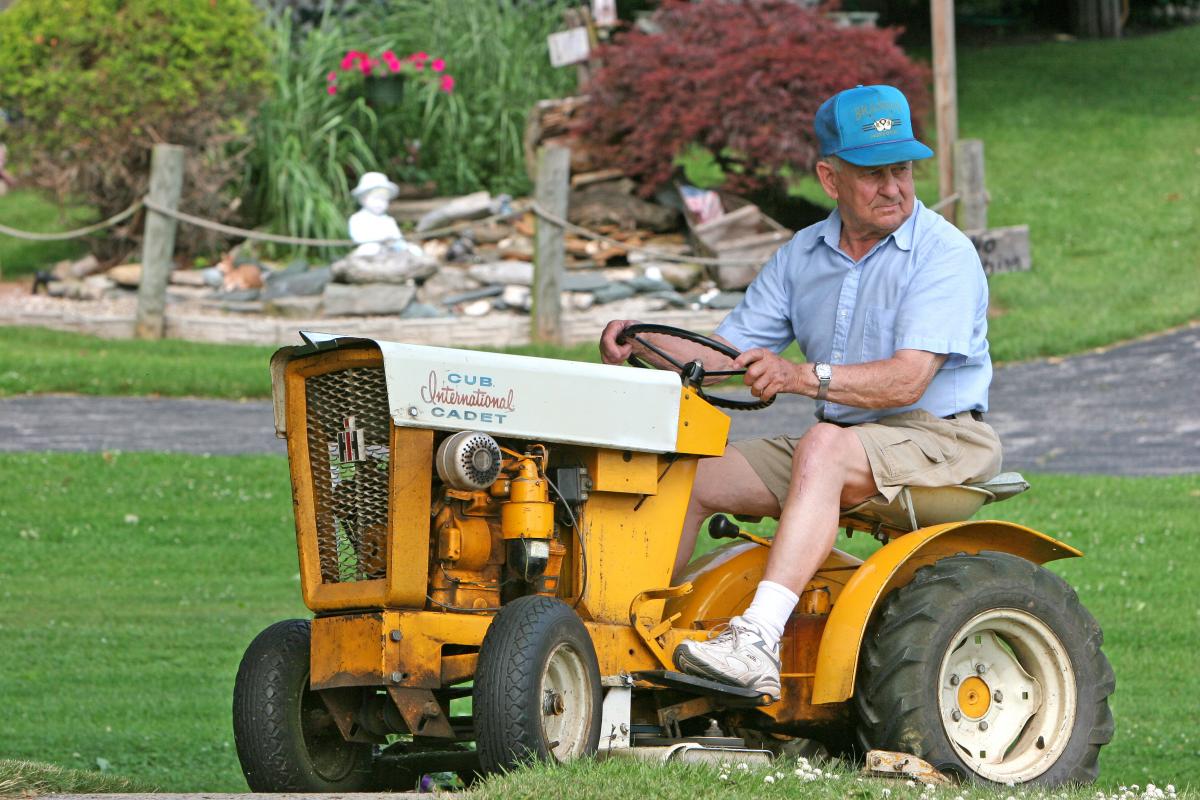
The Cub Cadet Original took suburbia by storm when released in 1961 and outsold Harvester’s conservative projections by a financial mile. Many of these machines are still on the job more than 50 years later. Oscar H. Will III photo
According to Schramm’s colleague Keith Burnham, the tooling for the Cub Cadet was never designed to handle the production numbers that it eventually saw. For example, near the end, frame-stamping machinery was worn enough that line workers accomplished final frame shaping with sledgehammers. Burnham notes that for that reason alone, 1963 was the right time for a change that had been in the works for some time, at least conceptually. In the end the process yielded a vastly improved machine that put the Cub Cadet garden tractor on the map.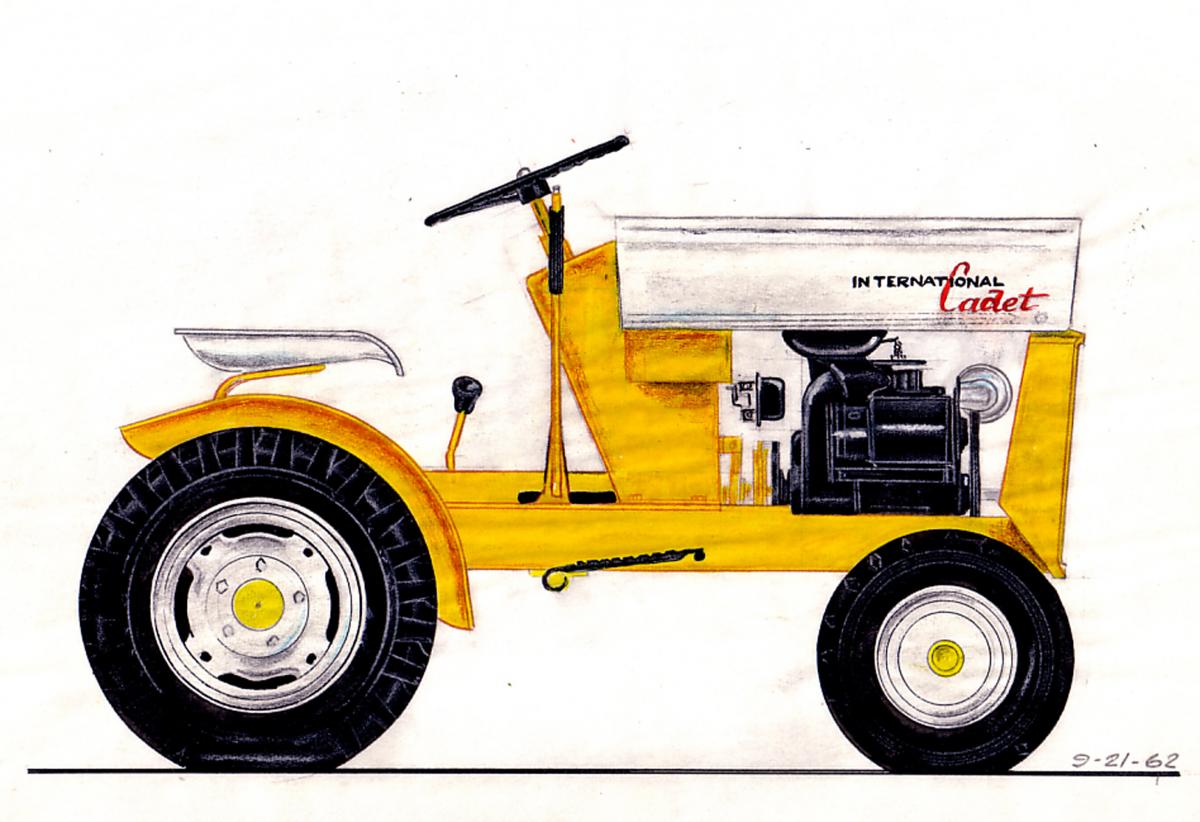
One of Keith Burnham’s 10-horsepower concept drawings rendered as part of the second-series design. Note that the engine’s crankshaft is now in line with the clutch and transmission input shaft. Oscar H. Will III collection
In 1962 Schramm was between major projects and so he was assigned the task of designing a U-joint shaft drive for Cub Cadet mowers. To fit the shaft-driven mower, the Cub Cadet’s frame needed to be raised to improve undercarriage clearance. The design team’s solution was to build an upturned channel frame with two parallel rails that would bolt to the sides of the transmission and above the axle-carrier tubes. That single change strengthened the frame-to-transaxle connection and allowed the 7-horsepower engine to be mounted low enough that the crankshaft aligned directly with the clutch and driveshaft.
“The original Cadet met the requirements for a tractor as far as design specifications were concerned,” Schramm says. “However, the belt drive detracted from the feeling that is was a true tractor. The new frame and drivetrain alignment quieted our critics.”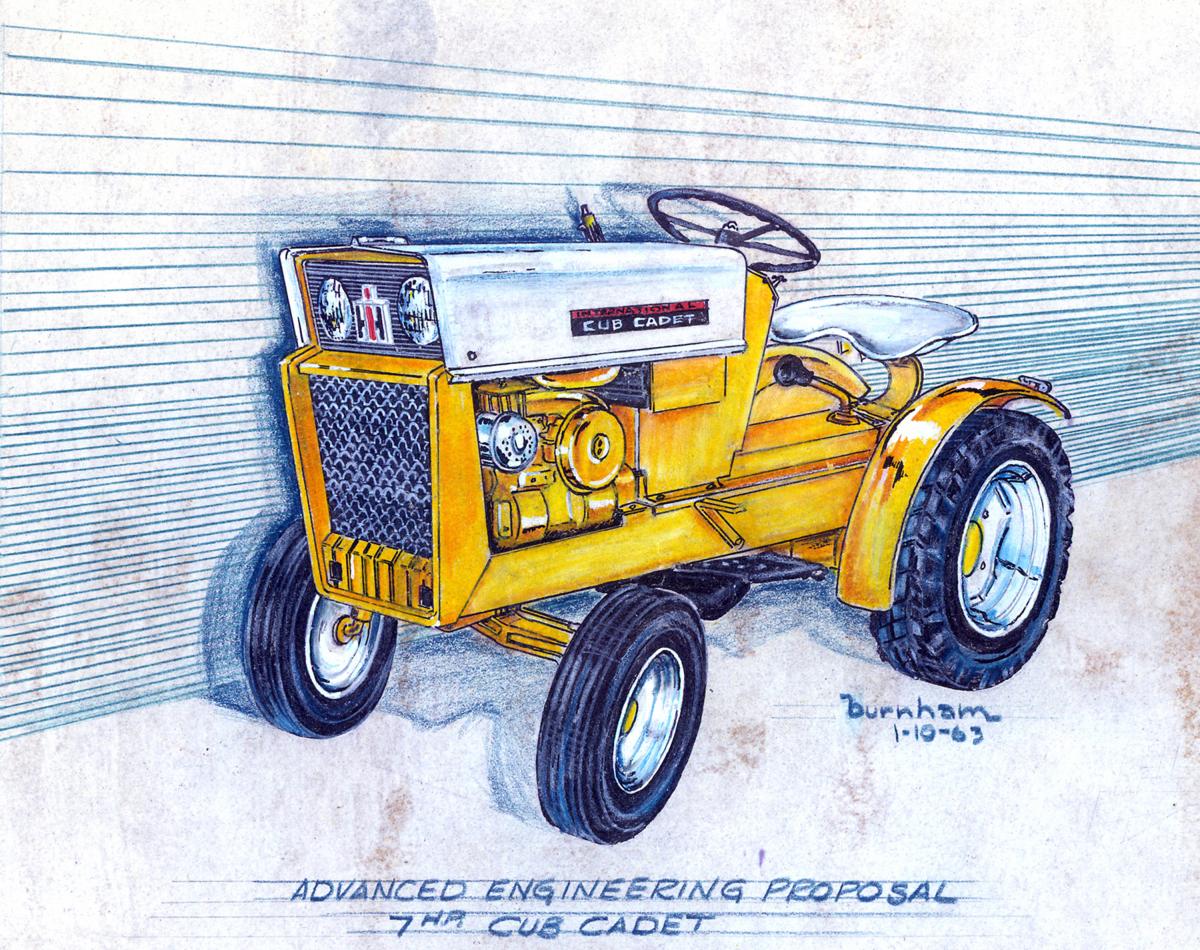
An early 1963 Keith Burnham concept drawing shows what came to be known as the Model 70. Note that the holes in the grille, meant to allow control-rod access to front-mount attachments, were not present in the production models. Oscar H. Will III collection
Add styling changes—which included a new grille, hood, pedestal, and fenders—to a new brake system and driveline, and in August 1963, Cub Cadet models 70 (7 horsepower) and 100 (10 horsepower) were released—ironically, without the shaft-driven mower, which proved too expensive.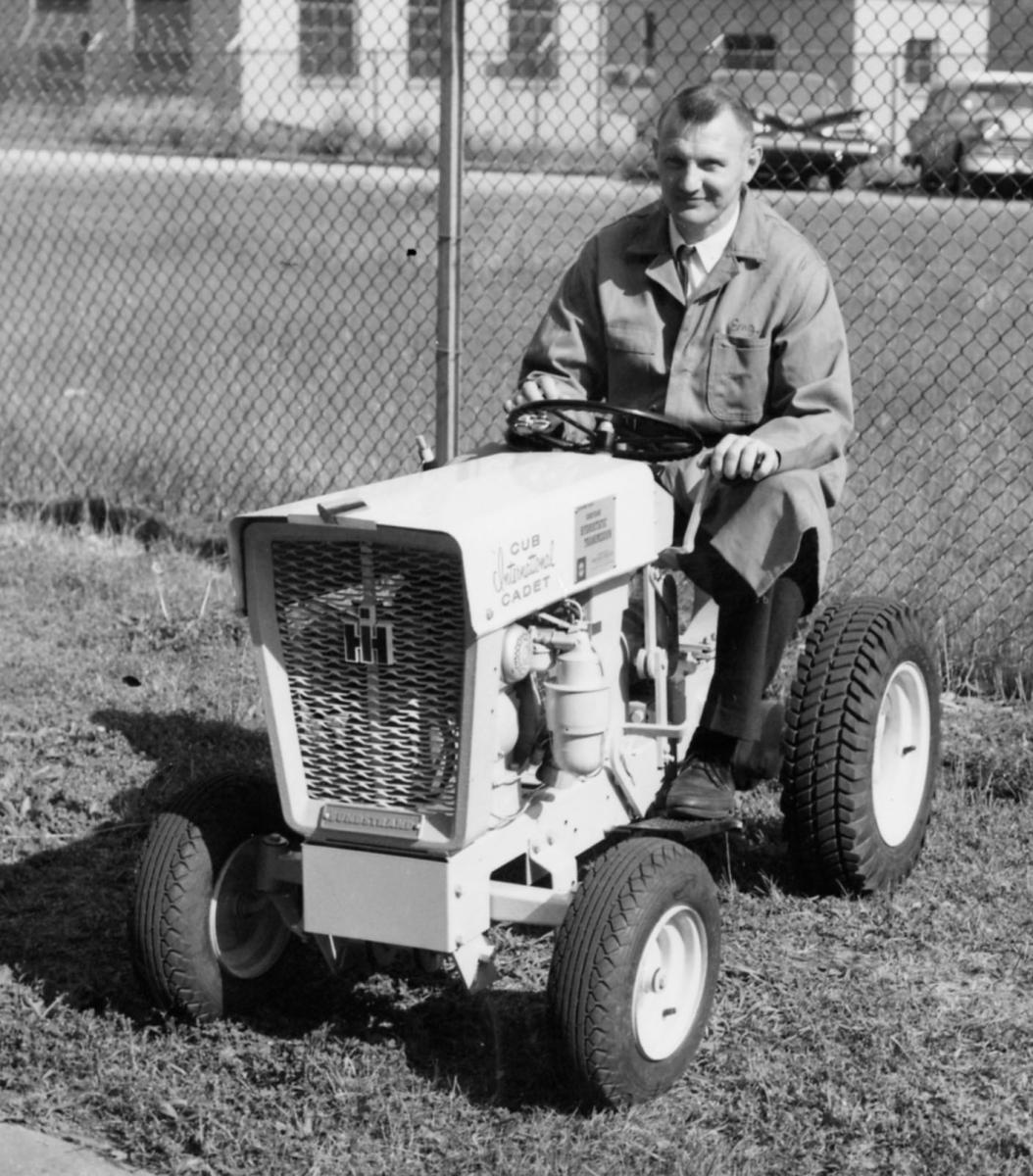
Charlie Ricketts poses with his first Cub Cadet hydro mockup. Charles Ricketts collection
In 1965, the Model 70 was replaced with a freshly styled Model 71, and the 100 was replaced with the 102, while a third model, the 12 horsepower 122, came online. These tractors were slightly more sophisticated in their styling and design, but many chassis parts still overlapped with earlier iterations.
In the fall of 1965, the hydrostatic-drive Model 123 was introduced at county fairs around the country through a circus show of sorts designed to show off the new tractor’s maneuverability, agility, and directional changeability. The straight man for the act was an unlikely animal trainer named Fearless Frisbee who used whips and a pistol to keep several Model 123s in line and doing tricks. In this case, though, the tractors were painted with tiger stripes and leopard spots. Each also had a face, ears, and tail. Highly skilled operators pulled wheelies, causing their tractors to rear up at Fearless Frisbee. In other antics, operators jumped their wildcat tractors over ramps, took corners on two wheels, and changed direction so rapidly that they sent gravel into the air and Fearless Frisbee heading for cover—much to the crowd’s delight.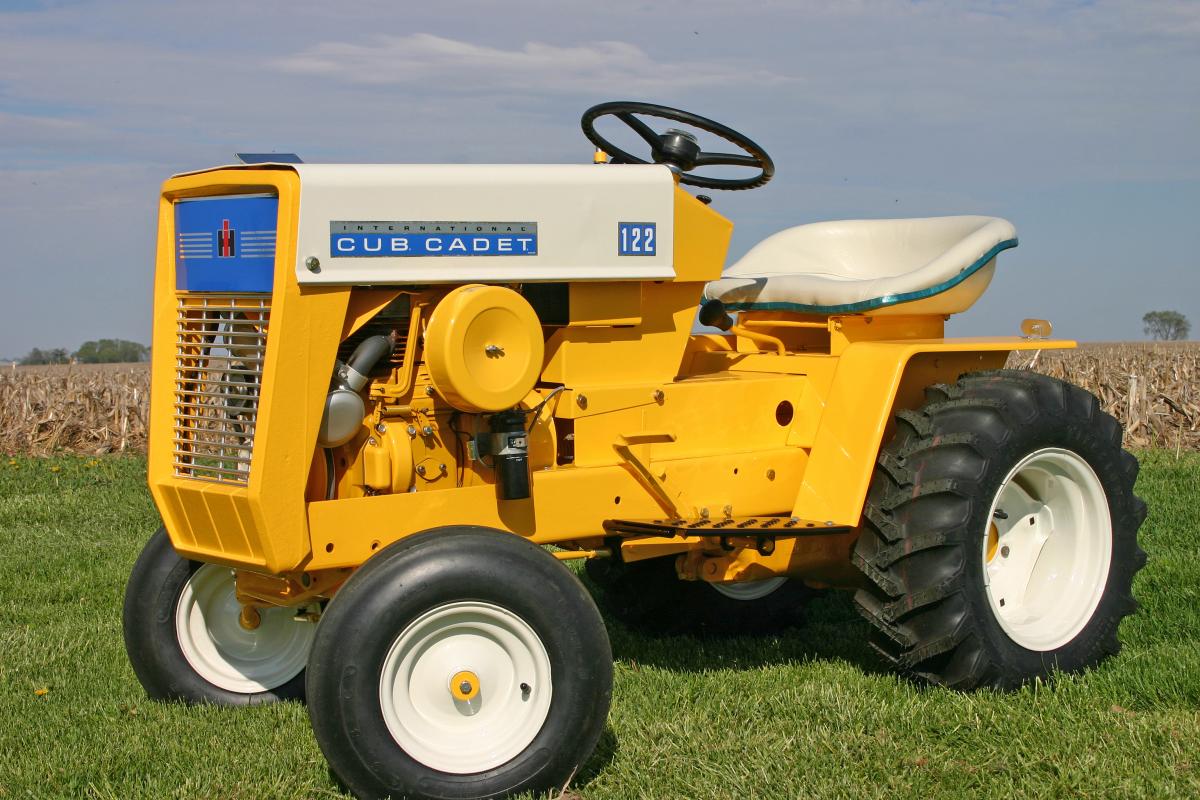
Harvester’s first 12-horsepower Cub Cadet was the Model 122. Before it went out of production, it was accompanied by the brand’s first hydro model, the 123. Oscar H. Will III photo
In 1967 a revised and expanded lineup was released with new styling and a quick-attach front implement carrier. The Model 72 and 104 replaced the 71 and 102, respectively. A new 10-horsepower hydrostatic Model 105 was added, while the Model 124 replaced the 122 and the 125 hydro replaced the 123. In two years’ time, these machines were replaced with the updated 73, 106, 107 (hydro), 126, and 127 (hydro). One of the most notable changes to come with these tractors was their one-piece stamped-steel seat platform and fenders.
In November 1969, the 14-horsepower Model 147 was added. This high-end tractor had an electric lift and modified frame (notched to fit the bigger blower housing of its 14-horsepower Kohler) and other enhancements that ultimately marked the end of the line for Cub Cadets on the second-generation frame.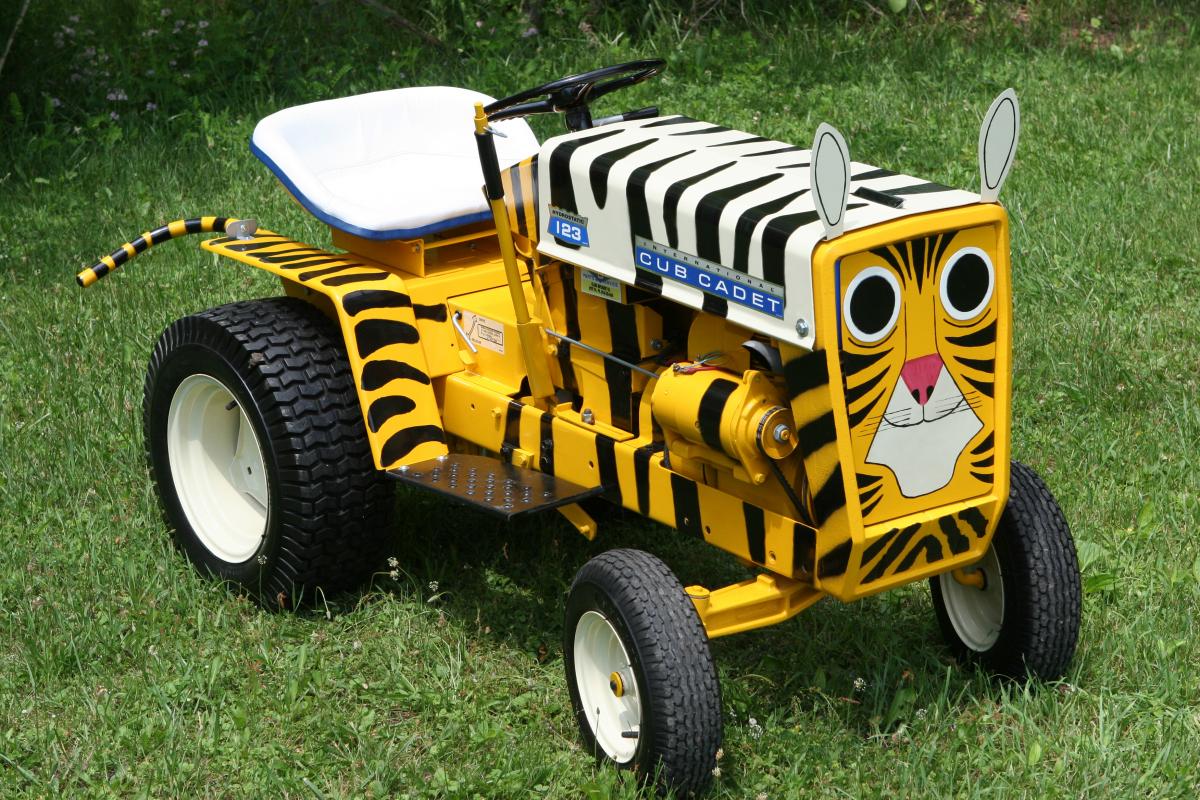
Using creative circus-act demonstrations that showcased the hydro Model 123’s agility, Harvester set the stage for a drivetrain that would become the standard in a few years. Oscar H. Will III photo
Harvester was working on some big changes for the 1970s.
“Once the fender change was made on the 73–147 line, the frame change was not difficult,” Harold Schramm explains as he describes the beginning of the wide-frame Cub Cadet lines. “The new formed-steel frame had more space and it also made the tractor look beefier.”
This sixth line of tractors was introduced in late 1971 with models 86, 108, 109, 128, 129, and 149. The Model 169 was introduced near the end of the run in August 1974. The tractors got new hoods, grilles, instrument panels, and safety and convenience updates. Of course the frame was wider up front to accommodate larger engines. For the first time the grille casting was painted white while the grille was now black plastic.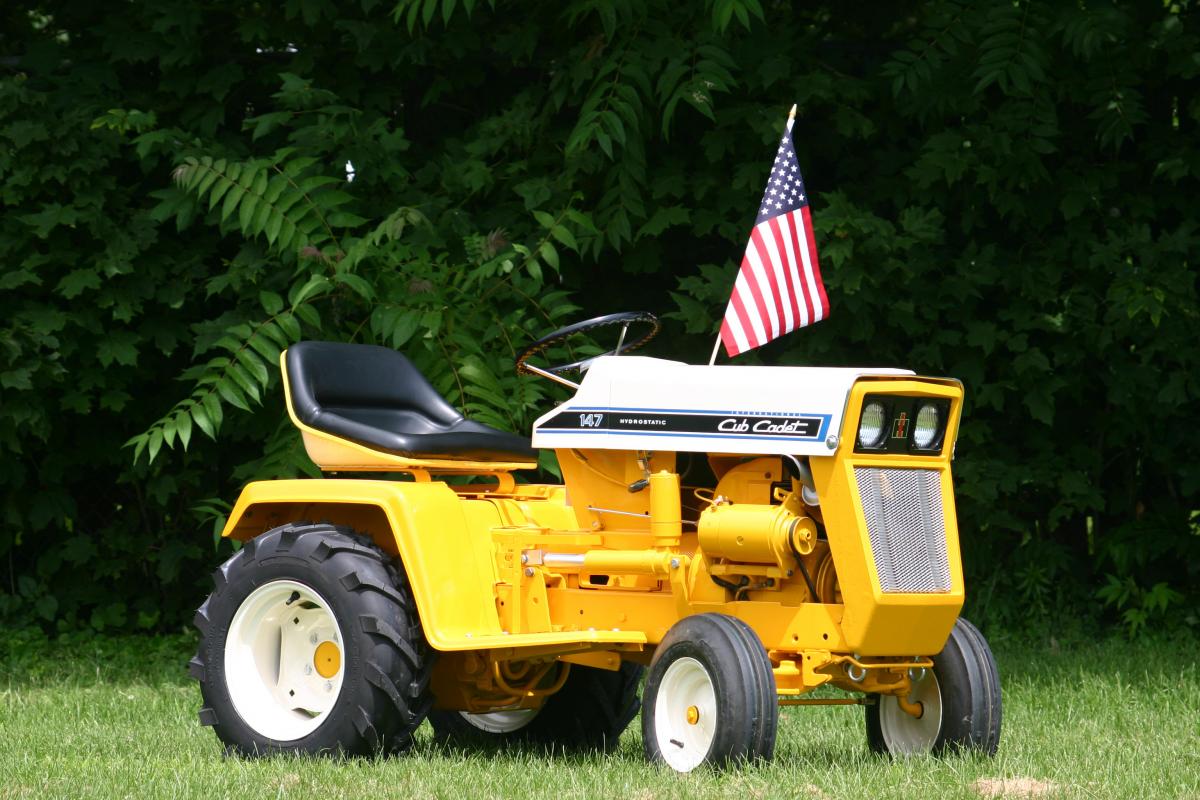
The Model 147 required some frame modifications to accommodate its 14-horsepower engine. This tractor could also be equipped with an electric implement lift, as seen in the lower center of the photo. Oscar H. Will III photo
The gear-drive models (86, 108, and 128) used the International Cub’s transmission. The other models were hydrostatic, including the 169—the first with a 16-horsepower engine. All models used the Cub’s cast-iron rear end (housing) and differential. The hydrostatic pumps on the two highest-horsepower Cub Cadets were fitted with auxiliary ports to serve the machines’ lifting and remote hydraulic needs.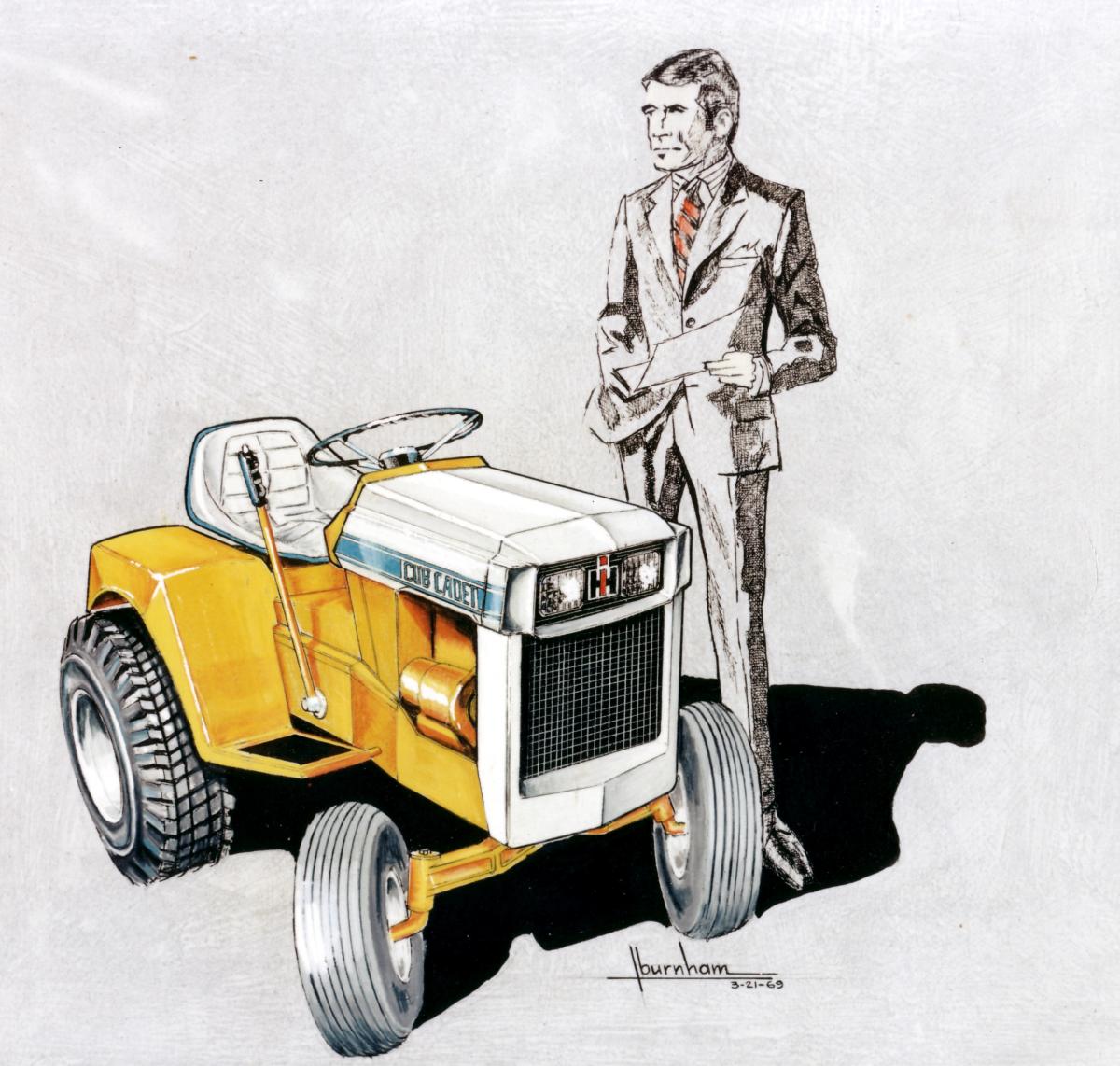
Even as the Model 147 maxed out the engine size that the ladder-style frame could handle, the engineering team was working on a new wider frame concept. Keith Burnham incorporated a little of the Ford Mustang into this early wide-frame concept drawing. Oscar H. Will III collection
In the fall of 1974, IH introduced a new series called the Quietline. These models had a new numbering scheme, rubber isolation of the engine from the frame, and an enclosed engine compartment. Initially the Quietline series included three gear-drive units in 8-, 10-, and 12-horsepower called the 800, 1000, and 1200 respectively. The 1250, 1450, and 1650 were the 12-, 14-, and 16-horsepower hydrostatic models. All still had Kohler engines, but to remain competitive price-wise, IH later introduced the Model 1100.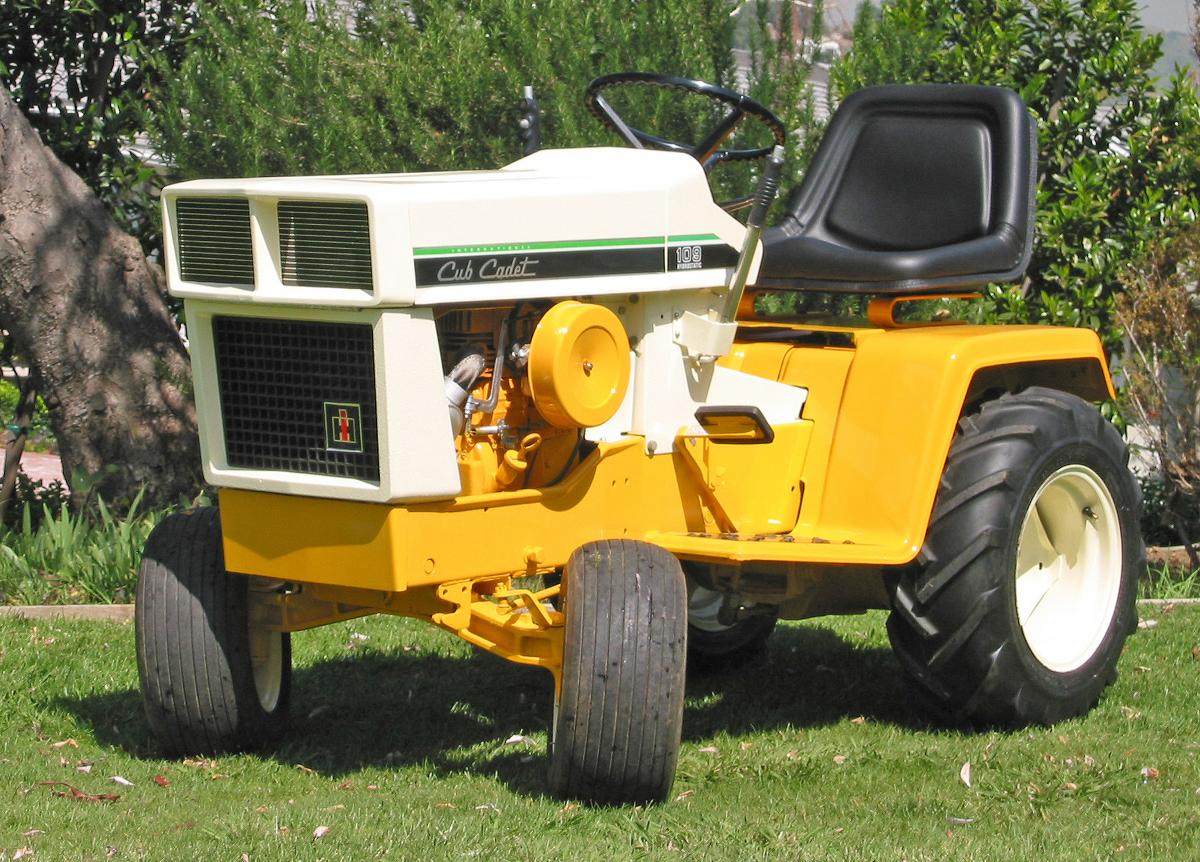
As the 10-horsepower member of the first wide-frame series, the Model 109 offered sufficient hydrostatic power in a package that was reasonably priced. The Model 108 was virtually identical except it employed the Cub’s heavy-duty three-speed transmission. Oscar H. Will III photo
The 1100 was a significant deviation from the rest of the wide-frame Cub Cadets. IH dropped the International Cub transaxle, opting for a less-expensive four-speed Peerless transaxle that was standard for most competing models, and it employed a belt-idler clutch. The 1100 was powered by an 11-horsepower Briggs and Stratton, and to further cut costs, engine compartment side panels were not included (which means that the 1100 is not a true Quietline).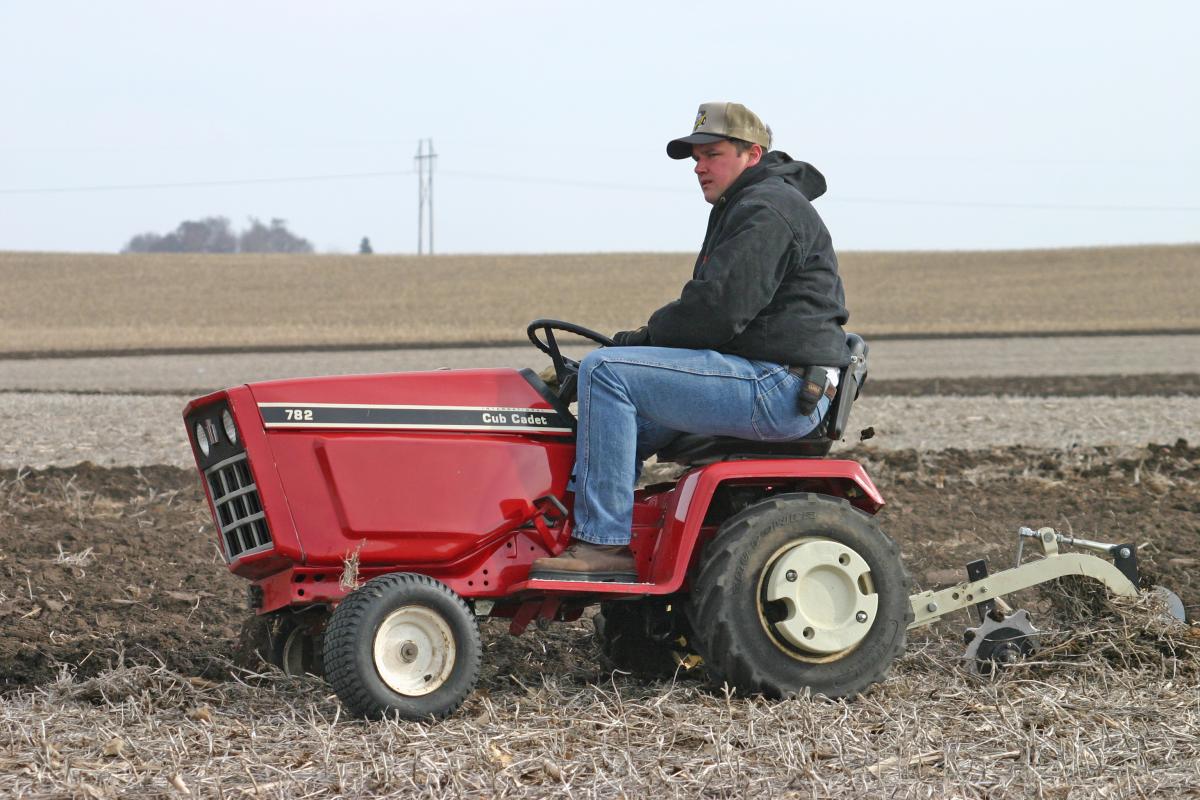
The 17-horsepower Model 782 was one of the last Cub Cadets developed before Harvester sold the line to Cub Cadet Corporation, a wholly owned subsidiary of MTD. The 782 Diesel was Cub Cadet Corporation’s first real improvement on the line. Oscar H. Will III photo
Released in 1979, the red 82 series Cub Cadets included the 11-horsepower gear-drive 482 and the 16-horsepower gear-drive 582. Both were offered with Briggs and Stratton engines, but only the 582 had the Cub transmission and differential. The 682 and 782 were 17-horsepower husdrostatic models powered by twin-cylinder Kohlers. The largest tractor in the lineup was the 19-horsepower 982 (later called the Super Garden Tractor), which was based on a longer frame than the other members of the 82 series and featured an optional Category 0 three-point hitch.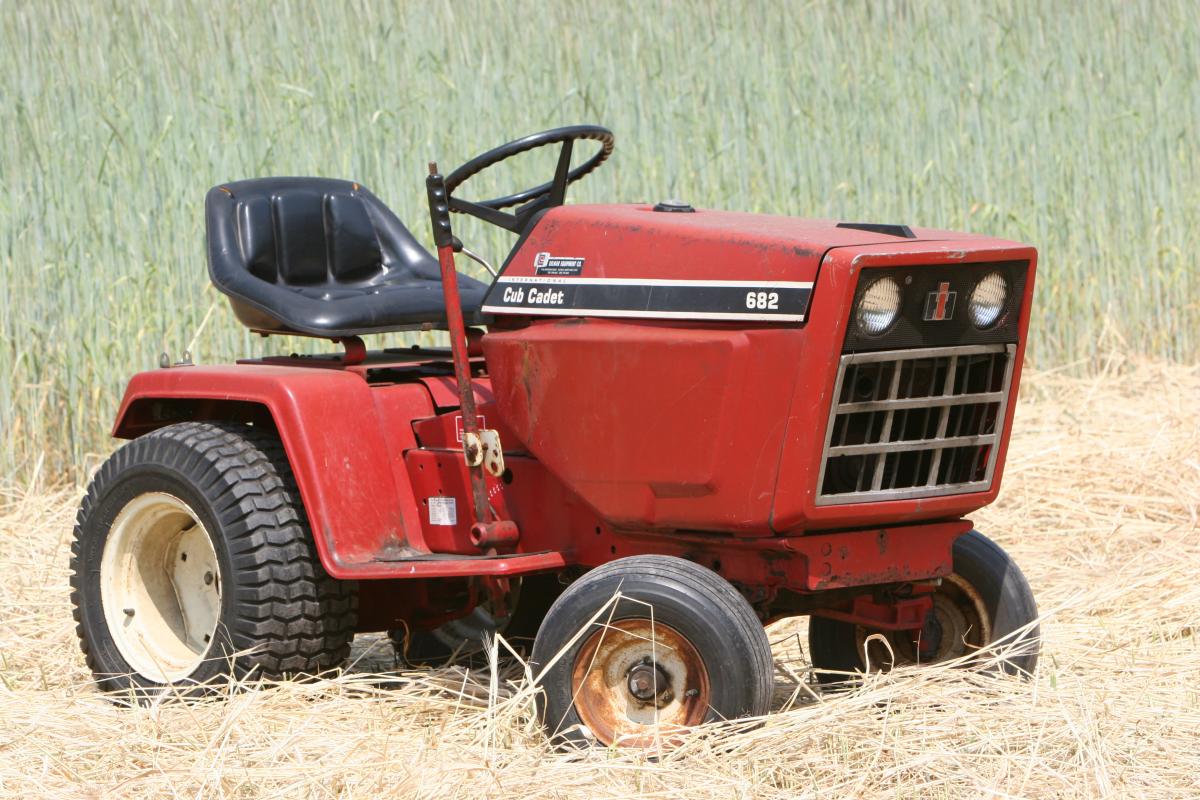
The 17-horsepower Model 682 was a little more Spartan than the 782 and came standard with a manual, as opposed to hydraulic, lift. By the time Harvester sold the line, there were a number of heavy-duty and light-duty gear-drive offerings in this style. Oscar H. Will III photo
The last International Cub Cadet is most likely a Model 782 with serial number 694248, built in April 1981. According to the serial numbers, IH manufactured approximately 693,658 regular-production Cub Cadets in a 21-year span. High quality notwithstanding, Cub Cadet was sold to MTD in 1981, and red 82 series IH Cub Cadets continued to be built by MTD for delivery to IH dealers. At the same time, MTD built yellow and white 82 series tractors that were sold as Cub Cadets (no IH insignia) by lawn and garden dealers.
To find out the rest of the incredible story of International Harvester, get your copy of Red Tractors 1958-2013 here!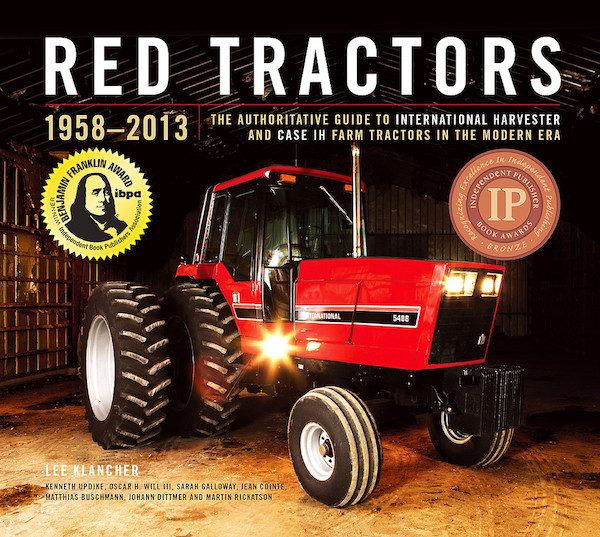
Previous Excerpt - Next Excerpt


